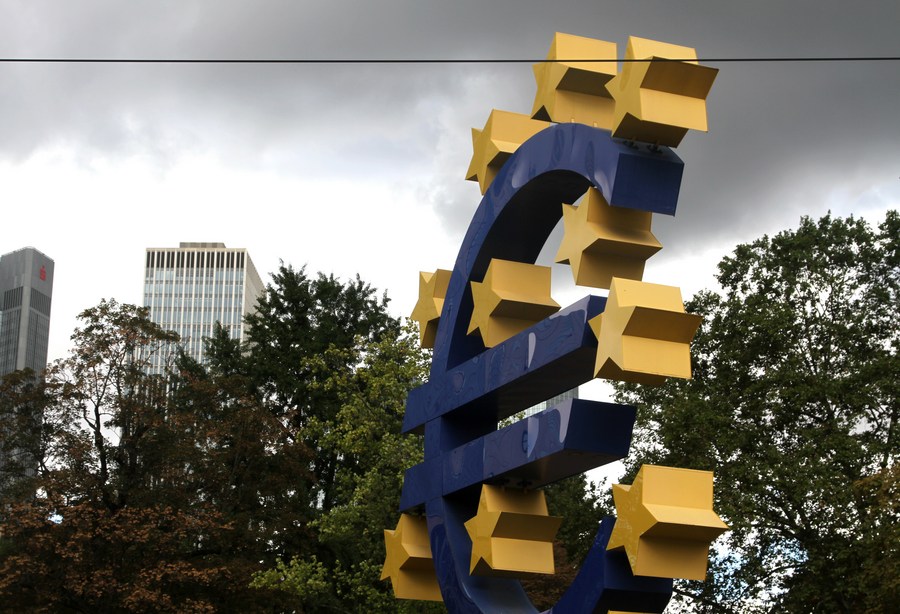Financial strains leave ECB's rate-hike path in murky waters

Photo taken on July 7, 2022 shows the headquarter of the European Central Bank in Frankfurt, Germany. (Xinhua/Shan Weiyi)
The latest strains that have gripped some financial institutions have muddied the waters, forcing the European Central Bank to open battle on another front: financial stability.
FRANKFURT, March 17 (Xinhua) -- The European Central Bank (ECB) on Thursday delivered on its previous pledge and hiked interest rates by another 50 basis points, falling short of providing future guidance in its monetary policy statement.
The central bank stressed that there should be no doubt in its resolve to tame stubbornly high inflation in the euro area. At the same time, the latest strains that have gripped some financial institutions have muddied the waters, forcing the ECB to open battle on another front: financial stability.
RATE HIKE
The ECB stuck to the rate hike path it envisaged at its meeting in February when it pre-committed to a 50-bp rate rise.
After the hike, the interest rates on the main refinancing operations, the marginal lending facility and the deposit facility will be increased to 3.5 percent, 3.75 percent and 3 percent, respectively.
Before the rate-setting meeting, speculations of a 25-bp rate hike swirled as observers reckoned that a 50-bp hike might risk compounding the financial distress of some financial institutions.
"Inflation is projected to remain too high for too long," the ECB said in a statement on Thursday.
The 50-bp hike sends a clear message that price stability remains a cardinal objective of the ECB.
"We are not waning on our commitment to fight inflation," said the ECB President Christine Lagarde in reply to a question at the press conference held here on Thursday.
PRICE PRESSURES
As energy prices dropped sharply in the euro area, inflation slipped to 8.5 percent in February.
Lagarde disclosed that there are signs of price hikes easing in some areas, but pressures remain high.
Inflation excluding energy and food increased to 5.6 percent in February, and other indicators of underlying inflation have also stayed high, said the ECB statement.

Photo taken on Sept. 8, 2022 shows the Euro sculpture in Frankfurt, Germany. (Xinhua/Shan Weiyi)
The latest ECB staff macroeconomic projections in March revised down inflation forecasts in the euro area, with ECB staff seeing inflation at 5.3 percent in 2023, 2.9 percent in 2024 and 2.1 percent in 2025.
"If our baseline was to persist when the uncertainty reduces, we know that we have a lot more ground to cover," Lagarde remarked.
FINANCIAL STRAINS
The sudden collapse of the U.S. lender Silicon Valley Bank sent shockwaves across the banking industry. Credit Suisse, the second-largest lender in Switzerland, saw its sustainability thrown into question.
To quell doubts about the looming banking crisis spilling over to the euro area, the ECB insists that the euro area banking sector is resilient, with substantial capital and liquidity positions.
Meanwhile, the central bank said it is monitoring market tensions and is ready to respond to preserve financial stability.
Regarding the concerns that higher interest rates may add to the financial strains of banks, Lagarde clarified that there is no tradeoff between price stability and financial stability, and the ECB's policy toolkit is fully equipped to provide liquidity support to the financial system in the euro area if needed.
Photos
Related Stories
Copyright © 2023 People's Daily Online. All Rights Reserved.









